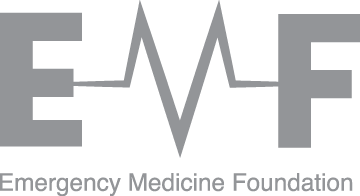Examining Sepsis in the Emergency Department
A prospective research program to characterise and facilitate improved outcome for admitted patients with sepsis
Grant ID: PROG-2009-003-WILLIAMS-SEPSIS2
Project Summary
Infections, particularly serious infections leading to sepsis, cost the Australian healthcare system millions of dollars every year and impose a significant burden of illness on the Australian community. Serious infections also have the capacity to cause tragedy at a much more personal level, with lethal outcomes possible even in young healthy individuals. Despite the significant consequences of these illnesses, we have very limited information about the best way to identify and treat infection in Emergency Departments. Therefore, research that provides more information is vital.
We are conducting a ground breaking body of research to improve our understanding of infection in Australian Emergency Departments. We will conduct a group of studies focusing on early identification and treatment of infection. Specifically, four studies will be conducted across two hospitals. The first will identify the types of historical and clinical information available to doctors during the early stages of assessment that predicts whether an individual is likely to become very ill with infection. Identifying these patients at risk of progression to severe illness can be difficult, and is important because certain potentially life-saving treatments are most effective when given early. The second study will identify the types of bacteria that cause infection in our community. The third study will examine the potential beneficial effect of a commonly prescribed class of cholesterol-lowering drugs (“statins”) on patients admitted with infection. Finally, in the fourth study we will develop an antibiotic order set that covers the major bacteria causing severe infections. This will enable earlier effective treatment of seriously ill patients. These studies are the first of their kind conducted in Australia and will ultimately enable doctors to identify and treat severe infection earlier.
Outcomes
Demographic, clinical and outcome data was collected on 8714 patients. The first 2 years of data collection was funded by an earlier EMF grant (PROJ-2008-004) and the final year was funded by this grant. The data has provided the department with significant capacity to conduct ongoing research.
Dr Williams said major findings from the published research has included an association between the early use of vasopressors and survival in patients with septic shock; and higher mortality in patients with severe sepsis and septic shock admitted to wards compared to those admitted to intensive care.
“Our current projects include the incorporation of our sepsis registry into a larger multicentre examination of the qSOFA score for sepsis5; antibiotic prescribing and microbial aetiology in community-acquired pneumonia; and a study looking at clinical characteristics associated with positive blood cultures in the Emergency Department,” he said.
Dissemination
Williams, J.M., Greenslade, J.H., Dymond, C.A., Chu, K., Brown, A.F. and Lipman, J., 2018. Characteristics, treatment and outcomes for all emergency department patients fulfilling criteria for septic shock: a prospective observational study. European Journal of Emergency Medicine, 25(2), pp.97-104.
Williams, J.M., Greenslade, J.H., Chu, K.H., Brown, A.F. and Lipman, J., 2018. Utility of community‐acquired pneumonia severity scores in guiding disposition from the emergency department: Intensive care or short‐stay unit?. Emergency Medicine Australasia, 30(4), pp.538-546.
Williams, J.M., Greenslade, J.H., McKenzie, J.V., Chu, K., Brown, A.F. and Lipman, J., 2017. Systemic inflammatory response syndrome, quick sequential organ function assessment, and organ dysfunction: insights from a prospective database of ED patients with infection. Chest, 151(3), pp.586-596.
Shetty, A., MacDonald, S.P., Williams, J.M., van Bockxmeer, J., de Groot, B., Esteve Cuevas, L.M., Ansems, A., Green, M., Thompson, K., Lander, H. and Greenslade, J., 2017. Lactate≥ 2 mmol/L plus qSOFA improves utility over qSOFA alone in emergency department patients presenting with suspected sepsis. Emergency Medicine Australasia, 29(6), pp.626-634.
Williams, J.M., Greenslade, J.H., Chu, K., Brown, A.F. and Lipman, J., 2016. Severity scores in emergency department patients with presumed infection: a prospective validation study. Critical Care Medicine, 44(3), pp.539-547.
Than, M., Aldous, S., Lord, S.J., Goodacre, S., Frampton, C.M., Troughton, R., George, P., Florkowski, C.M., Ardagh, M., Smyth, D. and Jardine, D.L., 2014. A 2-hour diagnostic protocol for possible cardiac chest pain in the emergency department: a randomized clinical trial. JAMA internal medicine, 174(1), pp.51-58.
Williams, J.M., Greenslade, J.H., McKenzie, J.V., Chu, K.H., Brown, A.F., Paterson, D. and Lipman, J., 2011. A prospective registry of emergency department patients admitted with infection. BMC infectious diseases, 11(1), pp.1-7.
Williams, J.M., Greenslade, J.H., Chu, K., Brown, A.F., Paterson, D. and Lipman, J., 2011. Prior statin use is not associated with improved outcome in emergency patients admitted with infection: a prospective observational study. Academic emergency medicine, 18(2), pp.127-134.
SHARE




